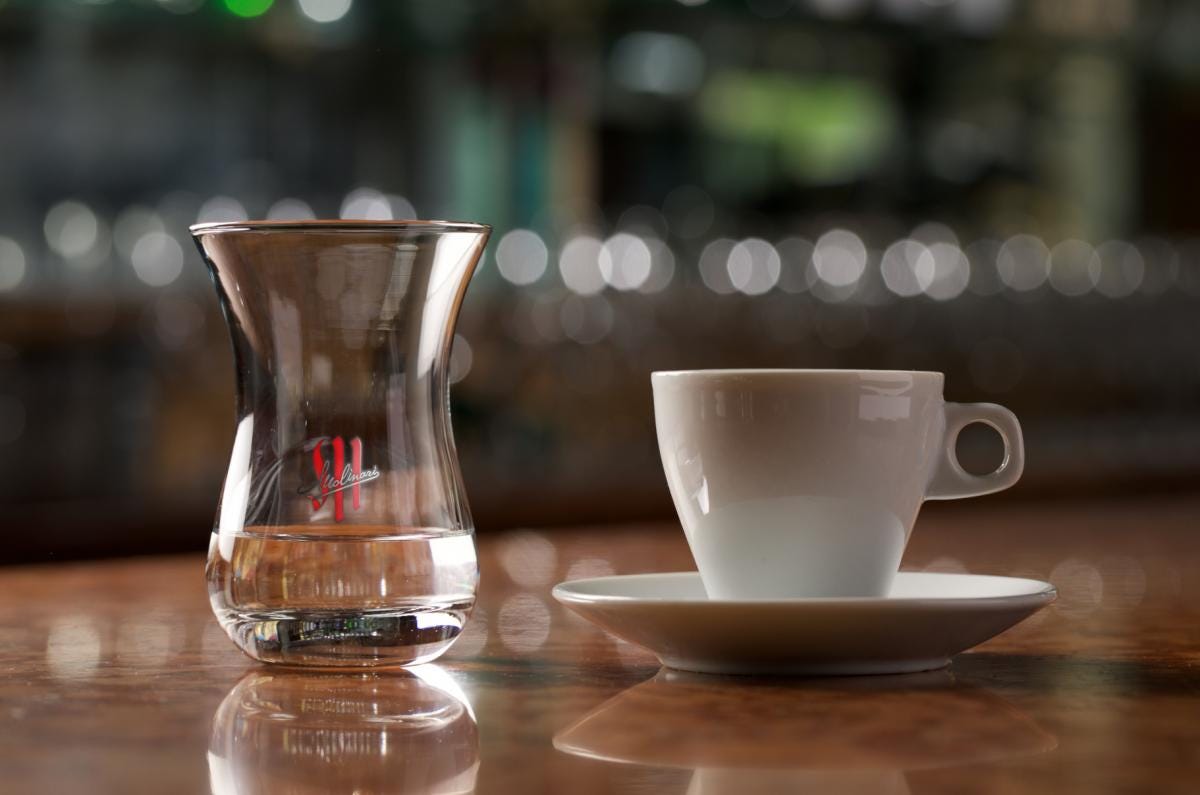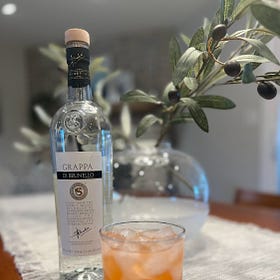Deep Dive: Grappa
A distinctive Italian spirit that doesn't deserve the hate
I didn’t like grappa when I lived in Italy. I ordered it probably once a week to see if that changed, and it never did. But more than a decade later, I’ve finally come around and I’ve finally cracked the nut on incorporating it into cocktails. Grappa is also a popular ingredient in Italian cooking and is often used to flavor sauces, stews, and desserts, so I might have to do a “cooking with grappa” post soon too.
If you are looking for a new spirit to experiment with in your cocktails, grappa is a great option. It has a unique flavor profile that can add depth and complexity to drinks, and it can also help to balance out the sweetness of other ingredients. Let’s dive in.
An Introduction to Grappa
Grappa is a type of almost-brandy that is made from the pomace, or leftover skins, seeds, and stems of grapes after they have been used to make wine. You also can’t add any water to the pomace, so fermentation has to occur on the solids directly. That makes it funky and variable, much more so than just about any other spirit, which was the idea - the whole enterprise exists to minimize the waste of winemaking. It is typically distilled twice and has a high alcohol content, ranging from 40% to 60% ABV. Grappa has a strong flavor that I can only really describe as “musty.” You’ll know what I mean when you try it. Then wait a while and try it again once you know what to expect.
Grappa is native to Italy, where it has been produced for centuries and must still be produced to be called grappa. The name "grappa" comes from the Italian word "grappolo," which means "cluster of grapes." The pomace is fermented directly for a few days, then distilled in a copper pot still. The resulting spirit can then be aged for a period of time, typically in oak barrels - usually, though, it’s bottled unaged and clear.
The closest analog is mezcal, where regionality and composition drastically alter the flavor and production methods are tightly regulated and aging practices are all over the place.
Grappa in Italia
Grappa has a long and rich history in Italy, dating back to the 14th century. It’s typically consumed neat as a digestif, and it’s more commonly ordered in cafes than in truer bars. It is also a popular ingredient in cooking. Grappa is most commonly consumed in the northern regions of Italy, such as Veneto, Piedmont, and Friuli-Venezia Giulia. However, it is also enjoyed throughout the country - you can probably order and receive a shot of grappa in any establishment with spirits in the country at this point.
Outside of being served as a neat pour, grappa may also be added to espresso to create a caffè corretto, meaning "corrected" coffee. Another variation of this is the ammazzacaffè ("coffee-killer"): the espresso is drunk first, followed by a few ounces of grappa served in its own glass. In Veneto, there is resentin ("little rinser"): after finishing a cup of espresso with sugar, a few drops of grappa are poured into the nearly empty cup, swirled and drunk down in one sip. Personally, that’s my favorite. Even better when the bar doesn’t ask and just pours it for you automatically over your own protestations - that’s how you know you’re in a truly Italian establishment.
But, until the late 20th century, though, grappa was pretty literally a cottage industry. It wasn’t until 1979 that the process was formalized, and exports followed about a decade later. So, as an “industry”, grappa is extremely new in the spirits world.
Grapes and Grappas
The types of grapes that are used to make grappa vary depending on the region of Italy. In the Veneto region, for example, grappa is often made from the Corvina grape, while in the Piedmont region, it is often made from the Nebbiolo grape. Grappa can also be made from a variety of other grape varieties, including Moscato, Pinot Grigio, and Merlot.
You won’t always know what grapes are in your grappa - there’s no requirement to declare the composition, and even if they do it’s probably not regulated or audited. Such is life when dealing with Italian exports.
A Brief Buying Guide
Even though a composition statement may not be completely accurate, I still think it’s a good sign that the bottle is legit. After all, since grappa started as a waste reduction initiative, it’s always tied to the wine directly and should share that identity. The flavor also does change with different compositions, so buying a consistent composition lets you build the same drinks on top of it.
Some High-Quality, Affordable Producers:
Cocktail Overview
If you ask the AI (Google Bard for me these days) what to make with Grappa, you’ll get something like the list below:
The Grappa Old Fashioned: This classic cocktail is made with grappa, Angostura bitters, simple syrup, and orange twist.
The Grappa Margarita: This Italian twist on the classic margarita is made with grappa, lime juice, orange liqueur, and a salted rim.
The Grappa Negroni: This Italian aperitivo is made with grappa, Campari, and sweet vermouth.
The Grappa Spritz: This refreshing cocktail is made with grappa, prosecco, and club soda.
That’s…very, very basic. They’d all work, sure, but they’re not interesting. As a general rule, if you use tequila/mezcal or gin in a cocktail, you can replace with grappa and adjust. I’d recommend adjusting by reducing the spirit proportion a bit (grappa is stronger in flavor than just about anything else) and amping up the acid/bitter component. So an old fashioned will be a short pour with a lot more bitters, a negroni won’t be truly 1:1:1, and a spritz will be more lightly spiked. That way, you get the grappa impact while still enjoying a balanced cocktail.
Of course, you could also mix up a Rose Forte or two :)
An Italian Explosion
The Cocktail - Rosa Forte I’m going to Italy soon-ish. I haven’t been in 11 years. It’s occupying a lot of my free brain space these days, and it’s activated an urge to make Grappa work in a cocktail. I have failed at doing this more times than I can count, but, dear reader, I’ve done it now and I am excited.



